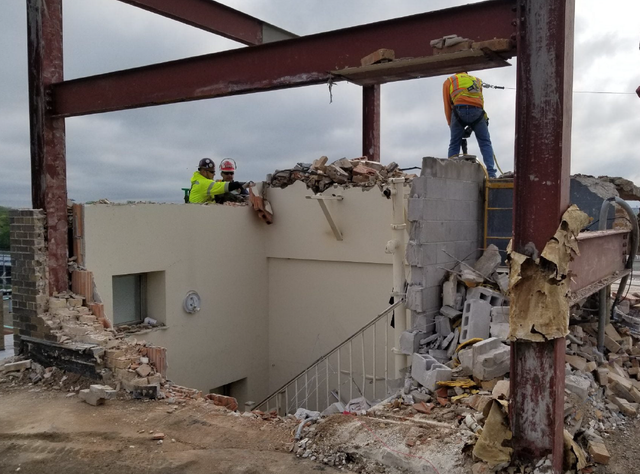Changing Spaces: Interior Demolition for Residential and Commercial Projects
Changing Spaces: Interior Demolition for Residential and Commercial Projects
Blog Article
The Ultimate Guide to Interior Demolition Techniques and Devices
Within the realm of indoor improvements, the art of demolition is a pivotal stage that requires accuracy, ability, and the right collection of devices. Whether you are an experienced specialist or a Do it yourself fanatic, recognizing the ins and outs of indoor demolition methods can make all the difference in attaining an effective job result.
Vital Interior Demolition Tools
When embarking on indoor demolition projects, having the proper tools is important for efficiency and safety and security. One of the most essential devices for interior demolition is the demolition hammer. This durable tool is developed to break via tough products like concrete, drywall, and ceramic tile.
Its capability to make specific cuts in tight areas makes it optimal for demolition job. Overall, having these necessary interior demolition tools will dramatically improve the effectiveness and security of any demolition task.

Security Precautions During Demolition

Furthermore, all workers entailed in the demolition process should get ample training on the proper handling of tools and tools to reduce mishaps. By sticking to these safety precautions, indoor demolition tasks can be lugged out effectively while focusing on the wellness of all people entailed.
Methods for Getting Rid Of Wall Surfaces
Applying appropriate security precautions during indoor demolition projects is essential for creating a secure working environment, and one essential element of such jobs involves understanding techniques for getting rid of wall surfaces. One generally used approach is hand-operated demolition, which calls for making use of basic hand devices such as sledgehammers, crowbars, and energy knives to thoroughly take apart the wall piece by piece. This technique enables better control over the demolition procedure, especially in fragile areas where precision is vital.
For bigger, much more complex wall surfaces, mechanical demolition might be required. This involves using heavy equipment like excavators or excavators to tear down walls effectively. Nevertheless, it is critical to make certain that the structural integrity of the structure is not jeopardized throughout mechanical demolition.
An additional method for getting rid of wall surfaces is deconstruction, where the wall surface is disassembled in such a way that preserves multiple-use materials. This sustainable strategy is eco-friendly and can additionally help in reducing disposal costs. Whichever method is utilized, it is vital to adhere to correct safety methods and take into consideration the architectural effects of wall removal to make sure an effective interior demolition project.
Removing Flooring Like a Pro
Efficiently eliminating flooring during indoor demolition calls for the appropriate devices and methods to make certain a smooth and successful process. Additionally, having a dumpster or assigned disposal area her response all set for the gotten rid of flooring products is critical for keeping a tidy job setting. By adhering to these strategies and using the right tools, getting rid of flooring like a pro can be attained efficiently and efficiently.
Correct Waste Disposal Methods
After efficiently getting rid of flooring utilizing the ideal devices and strategies, the following critical step in the indoor demolition procedure is executing proper waste disposal approaches. Appropriate waste disposal is click site vital for maintaining a tidy and secure job setting during and after demolition.

Specialists must stick to local policies concerning waste disposal to prevent fines and penalties. Using specialist waste administration services can streamline the disposal process and make certain conformity with environmental standards. By carrying out appropriate garbage disposal approaches, indoor demolition tasks can be completed effectively and sustainably.
Verdict
In final thought, interior demolition needs the usage of crucial devices and stringent safety preventative measures to guarantee a secure and successful procedure. By adhering to these standards, interior demolition can be completed properly and with marginal risks.
One of the most essential tools for indoor demolition is the demolition hammer (interior demolition). Generally, having these essential indoor demolition Learn More Here tools will considerably boost the efficiency and safety and security of any type of demolition project
Successfully eliminating floor covering throughout interior demolition requires the proper devices and techniques to make sure a successful and smooth procedure.After effectively eliminating floor covering making use of the suitable tools and strategies, the following vital step in the indoor demolition process is executing correct waste disposal methods.In final thought, interior demolition calls for the use of necessary devices and stringent security precautions to ensure a secure and effective process.
Report this page